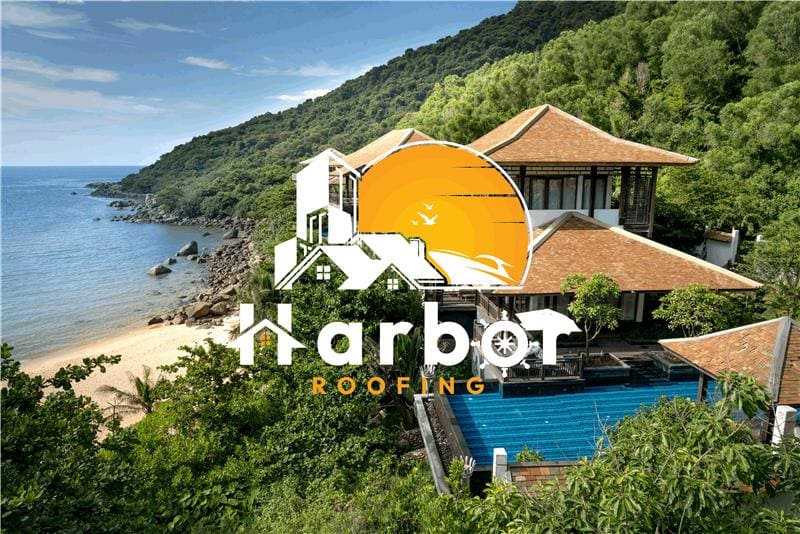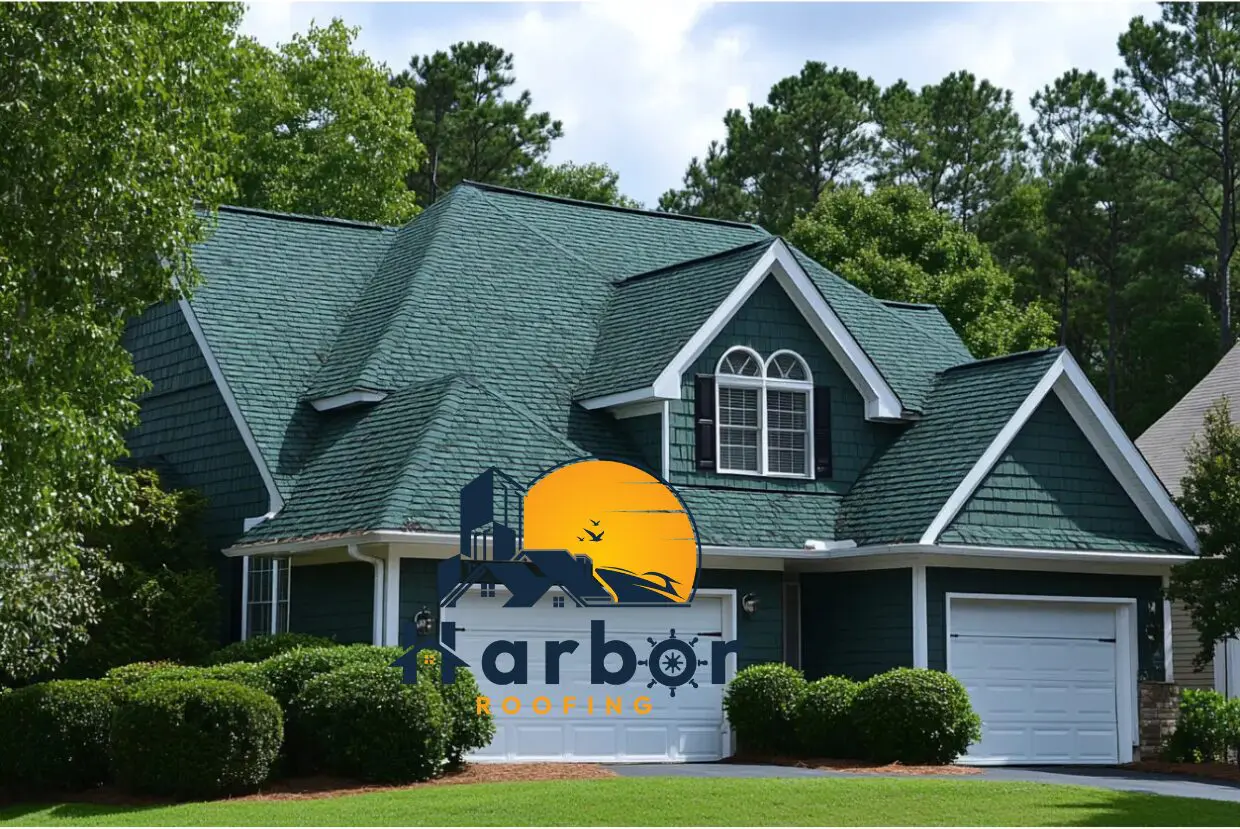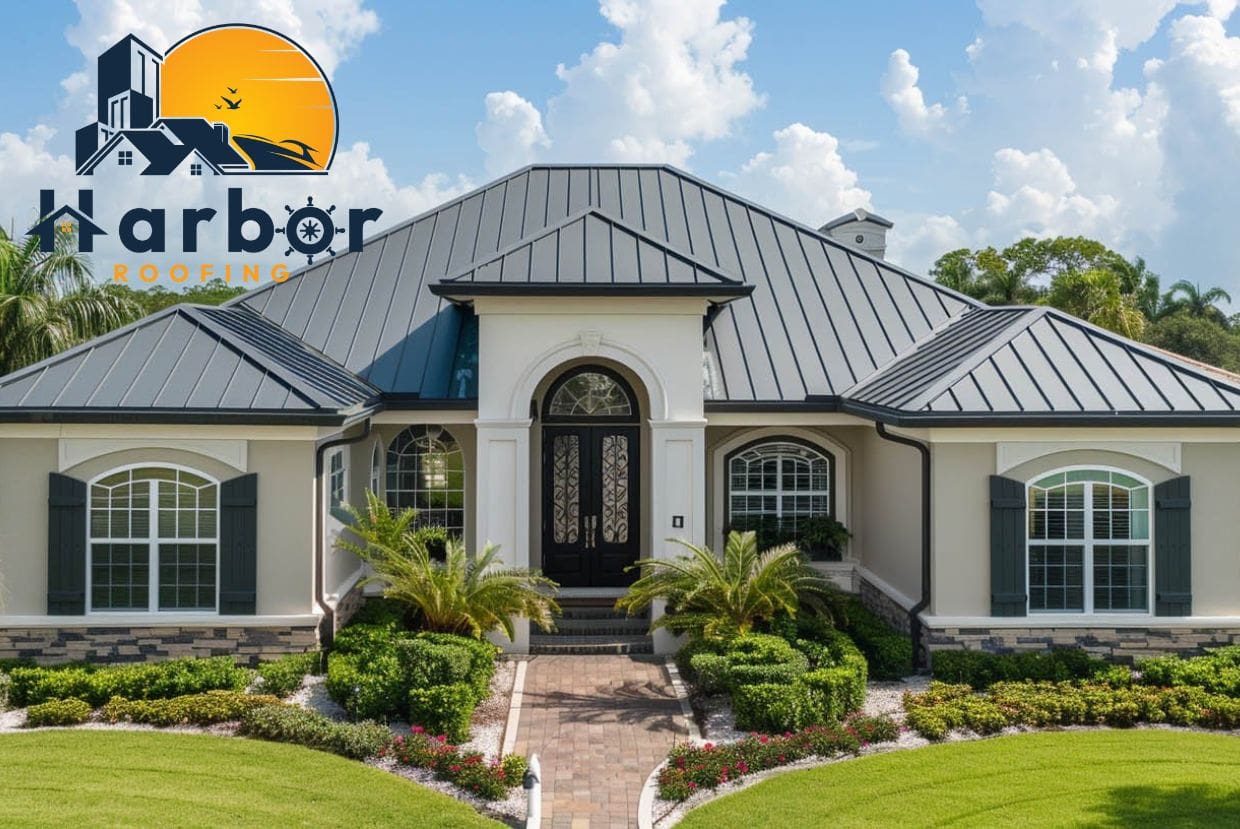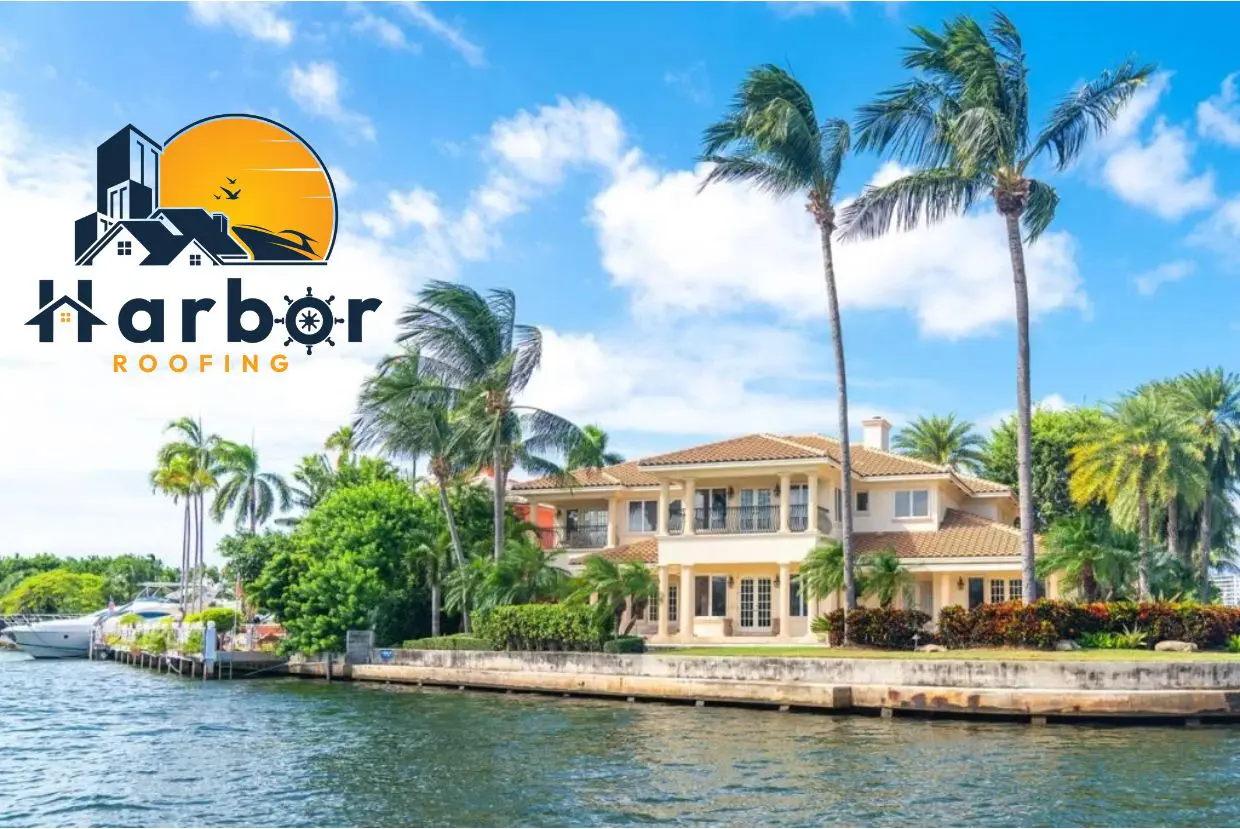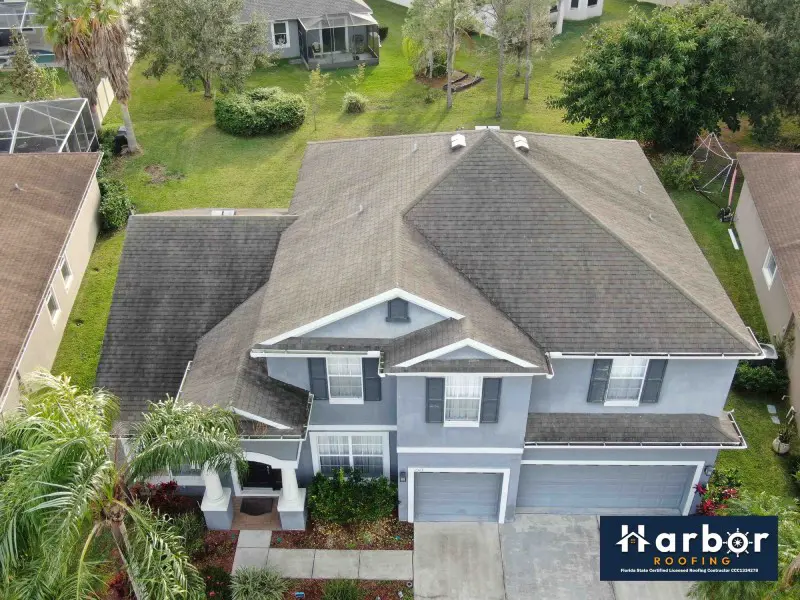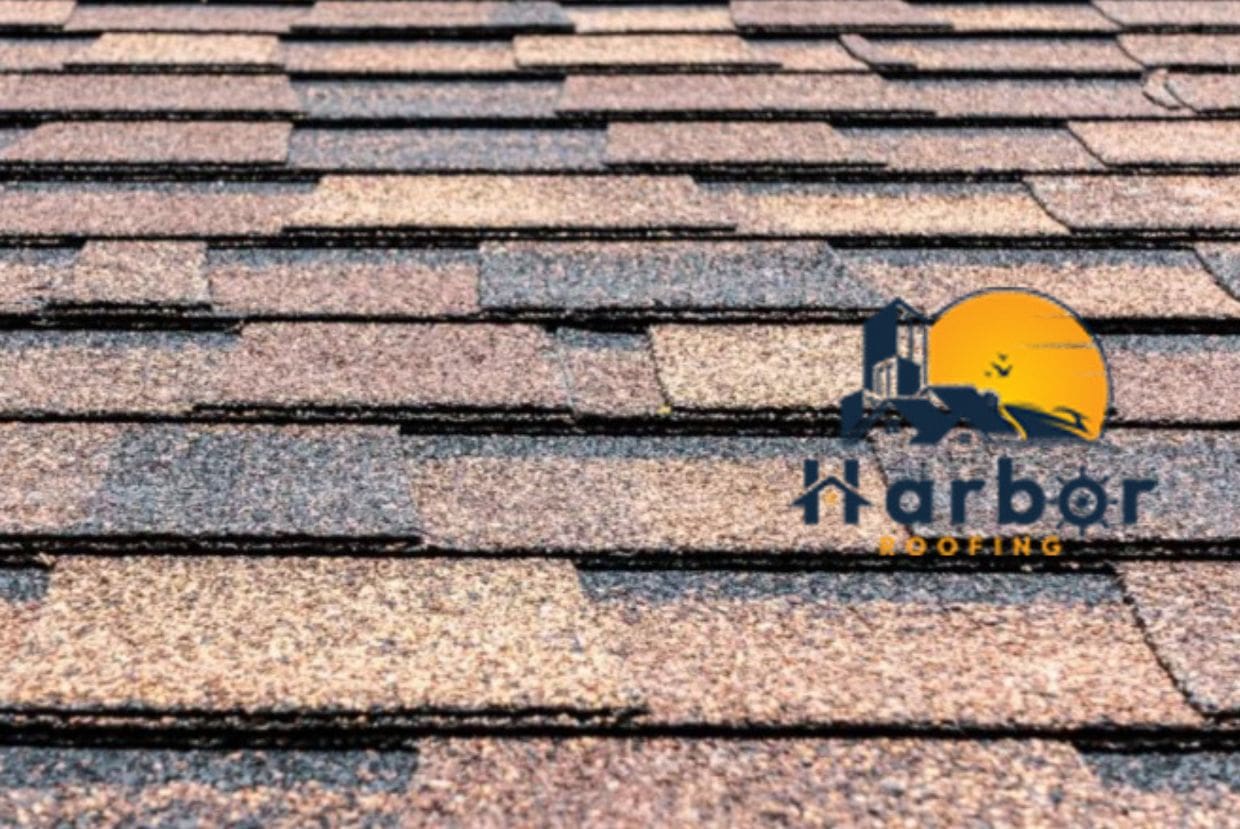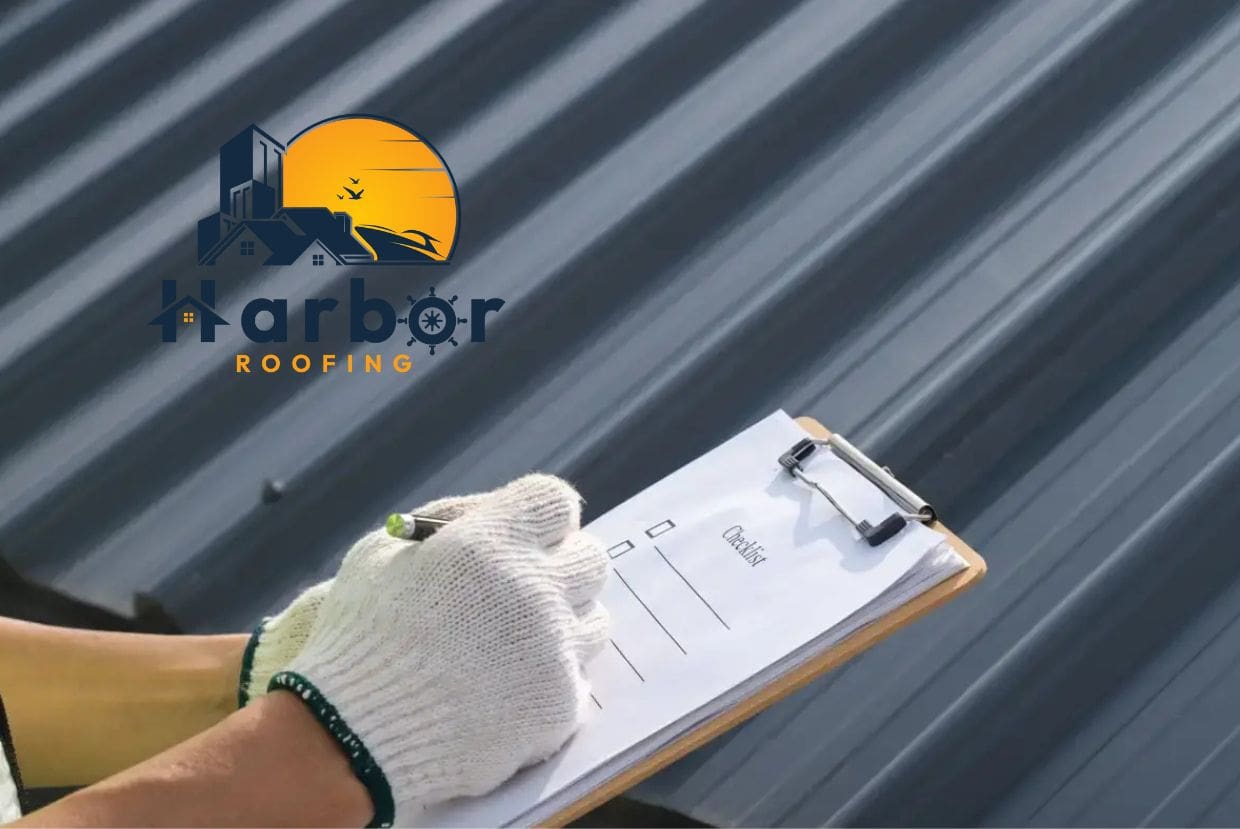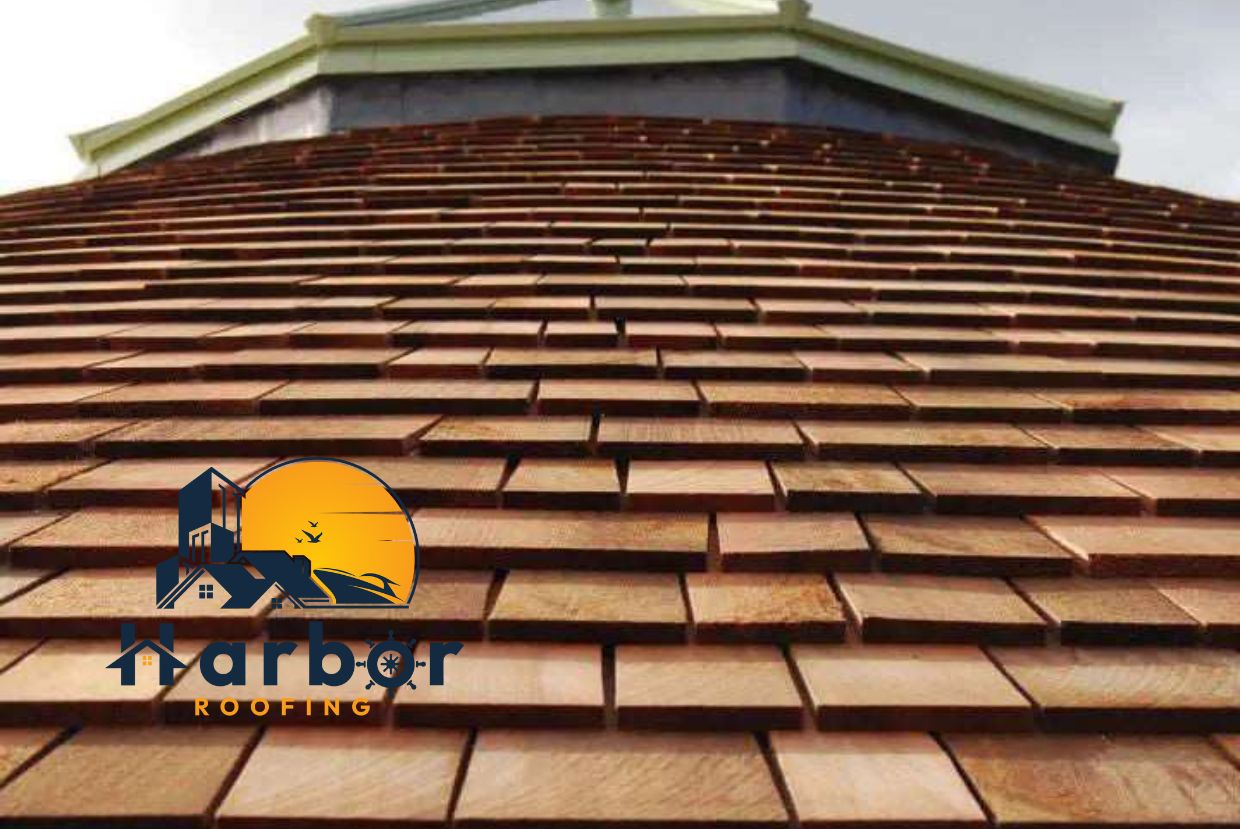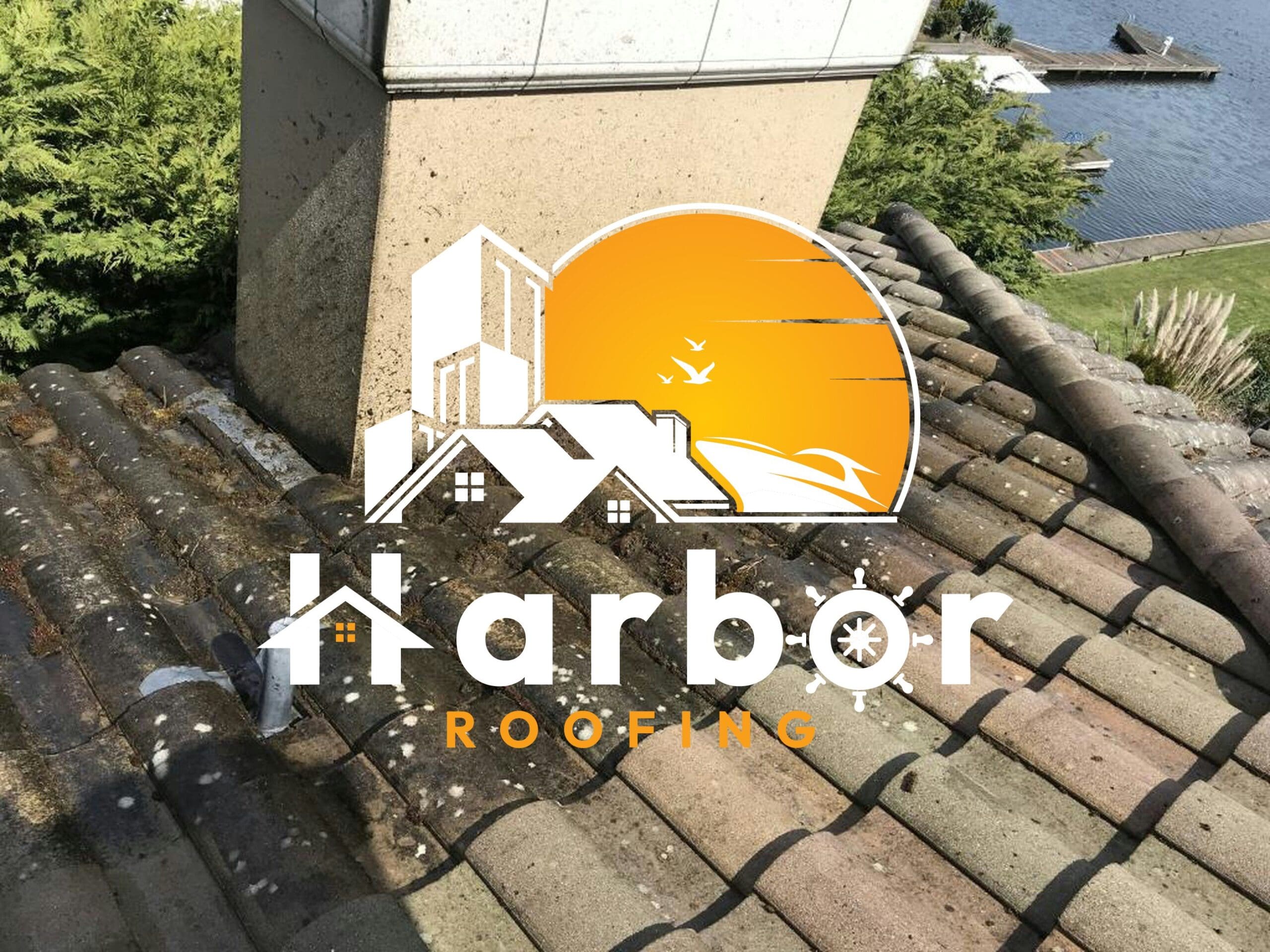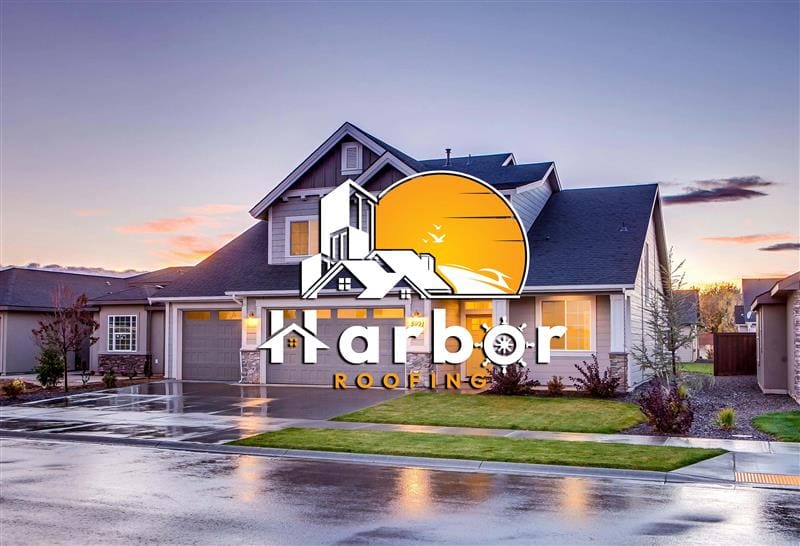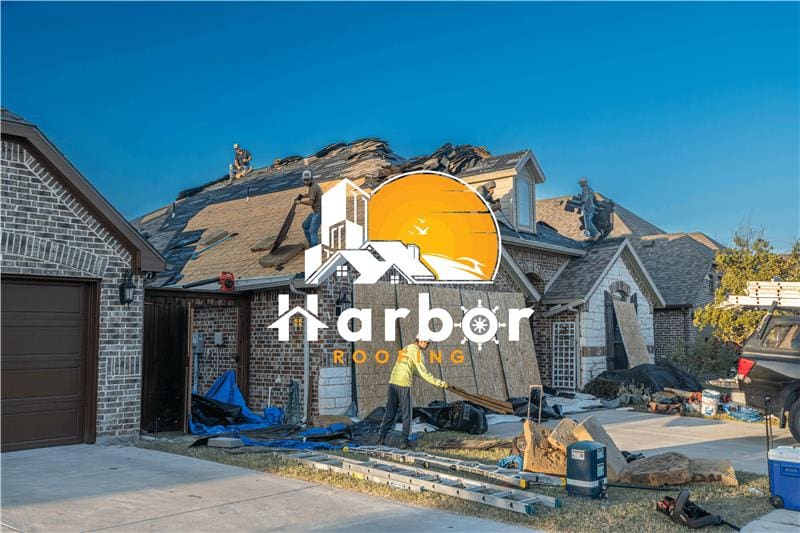Table of contents
- Why Salt Air Is a Major Threat to Coastal Roofs
- Roofing Materials — What Handles Salt Best and Worst
- Common Signs of Salt-Induced Roof Damage
- Maintenance and Prevention Strategies
- Choosing the Right Roofing System for Coastal Protection
- Long-Term Roof Care — Investment and Lifespan Gains
- Salty Air, Savvy Roof Care
Beach living is a great romance until your roof damages and begins to rust like a rusty old boat anchor.
Along Florida’s coastlines, salty ocean air isn’t only invigorating, it’s corrosive. The salt that it contains sticks to rooftops, accelerating deterioration that most inland homes never have to suffer from.
If you’re a beachfront homeowner, knowing how salt speeds up roof deterioration is necessary. Whether it’s quickly rusted fasteners or stained shingles, your roof bears the brunt of it. In this article, we’ll look at how salt air ruins roofing materials, what to look for, and the best methods to safeguard your home before the next ocean breeze blows in something other than the ocean fragrance.
Why Salt Air Is a Major Threat to Coastal Roofs
Chloride Particles and Acceleration of Corrosion
As mentioned, salt air can be revitalizing, but the sodium chloride it contains can be damaging to your roof. The tiny particles settle on exposed surfaces and start a stealthy attack, binding with atmospheric moisture to form a corrosive coating.
This salty coating works like sandpaper on metal parts, particularly flashing, nails, and vents. Eventually, even rust-proof coatings deteriorate, leaving the metal exposed. As corrosion takes place, tiny spots of rust become structural vulnerabilities. Thus, posing a threat of roof damage in Florida’s next storm season.
High Humidity and Moisture Retention
Florida beach areas are not only salty, they’re also humid almost all the time. All this wetness seeps into roofing material, particularly under shingles or tiles, where air can’t get in. Plus, this trapped water then becomes the breeding ground for biological growth.
Moreover, mold, mildew, and algae love these pockets of humidity, quietly weakening the structure of the roof. Under poorly ventilated attics, it only gets worse, resulting in warped decking and rot. Despite the roof appearing okay on the outside, salt and moisture are probably busily working overtime behind the scenes.
Shortened Material Lifespan
Salt-laden air not only ages your roof but also greatly speeds up the wear-and-tear process. Parts such as flashing, screws, metal panels, and sealants degrade much more quickly in sea air. With time, these compromised sections undermine the entire roofing system. This results in leaks occurring more frequently, and storm resistance is lost.
Furthermore, in the absence of preventive maintenance or timely replacement, the roof might need to be entirely replaced well before its planned lifespan. Therefore, making salt exposure one of the most expensive types of roof damage in coastal Florida.
Roofing Materials — What Handles Salt Best and Worst
Aluminum and Galvalume Steel
Galvalume and Aluminum steel are among the leaders in coastal roofing due to their inherent resistance to corrosion. Aluminum has a natural oxide coating that guards against salt air, making it perfect for houses by the coast.
Galvalume steel adds aluminum, zinc, and silicone for added protection. It lasts longer against rust than standard steel and is effective under the salty, wet conditions of Florida. Lightweight and energy-conscious, these products provide strength without diminishing effectiveness.
Stainless Steel, Copper, and Zinc
These are high-end materials with longevity and resistance to roof damage related to salt. Stainless steel is durable even in harsh coastal environments and is therefore excellent for flashing and fasteners.
Copper and zinc form protective patinas over time, which are natural barriers against corrosion. Although they are more expensive and may need professional installation. These metals deliver long-term benefits, cutting down on roof damage and repair needs in the long term.
Clay, Concrete, and Composite Shingles
Clay, concrete, and composite shingles provide good salt exposure protection. They are non-metallic and therefore do not rust, and their dense nature resists moisture intrusion. Clay and concrete are especially popular in Florida for their salt resistance and heat tolerance.
Composite shingles mimic the appearance of natural materials but with increased durability. Though these alternatives perform more effectively in coastal environments than asphalt does. They still need to be periodically inspected to control algae, cracking, and surface erosion.
Asphalt Shingles and Standard Steel
Asphalt shingles are inexpensive, but they perform poorly in coastal environments. Salt air erodes the protective granules, making shingles brittle and less resistant to UV radiation over time. This speeds up aging and decreases overall lifespan.
Similarly, regular steel roofing, particularly uncoated or badly coated varieties, is also susceptible. Salt causes rust on fasteners and panel joints, resulting in water entry and premature failure. Such materials can be inexpensive to install but result in expensive roof damage in the long run.
Common Signs of Salt-Induced Roof Damage
Rust and Corrosion on Metal Parts
Salt-filled air sticks to exterior metal components, so flashing, nails, vents, and gutters are particularly susceptible to corrosion. These components usually exhibit reddish stains or shedding metal, very telling signs of salt damage.
Corrosion over time compromises structural integrity and causes water penetration. Even stainless fasteners in coastal Florida houses can start pitting or rusting if coatings erode, requiring immediate inspection and replacement.
Granule Loss and Stained Shingles
Shingles exposed to salt-laden air shed their weathering granules at a faster rate, creating patchy, UV-vulnerable surfaces. Loss of granules is usually paired with washed-out coloring, particularly on sun-exposed slopes.
You may also notice dark streaks or blotchy patches that indicate rapid aging. These stains not only damage curb appeal, but they also put your roof at greater risk for moisture absorption and heat gain.
Moss, Mold, and Algal Growth
High humidity and lack of ventilation, together with salt air, promote biological growth. Black streaks of algae or green spots of moss can start developing where water fails to evaporate rapidly.
It holds moisture on the roof surface and exacerbates material degradation. In extreme circumstances, it can operate under shingles or tiles, developing routes for leaks and rot in the underlayment.
Deterioration at Exposed Edges or Cut Lines
Seams and edges are the initial signs of salt damage, particularly if improperly sealed at the time of installation. Edge cut lines on metal panels or unpainted edges degrade more quickly in salty conditions.
These events cause bubbling, flaking, or rust to spread inward. These points of weakness are now entry points for water, which raises the likelihood of leaks, internal water damage, and even pest invasion.
Maintenance and Prevention Strategies
Seasonal Fresh-Water Rinsing
Fresh water rinsing of your roof on a regular basis washes off salt deposits responsible for roof corrosion in coastal regions. Particularly after storms, flushing the surface dissolves corrosive salt particles that adhere to metal, shingles, and gutters.
Even a light rinse with garden hose water stops faster wear. Better yet, do a rinse several times a year, i.e, right after the storm, and during mid-dry seasons. This easy preventive measure greatly curtails rust, staining, and deterioration long-term in Florida’s salty, humid environment.
Professional Inspections Twice a Year
Scheduling regular professional roof inspections prior to and following hurricane season guarantees that initial signs of roof damage from salt air and moisture are identified. Professionals look for rust spots, granule loss, sealant failure, and corrosion in flashing, common conditions near coastal areas.
Inspection firms suggest two visits annually, as it allows you to detect small problems before they become leaks or damage to the structure. Yearly inspections become particularly important for roofs older than a decade. Early maintenance prevents small problems from turning into expensive replacements.
Protective coatings and sealants
Use of specialized coatings such as elastomeric, acrylic, silicone, or PVDF layers protects roofing surfaces from salt-bearing air and roof damage. They resist corrosive moisture, retard oxidation, and provide UV protection.
Metal panels and tiles especially benefit from sealants or factory-grade finishes made for coastal exposure. Reapplying protective coatings every few years further extends roof life. Combined with proper flashing and fasteners, these coatings form a resilient defense against corrosion.
Use of Corrosion‑Resistant Fasteners and Flashing
Upgrade to rust-resistant materials such as 300-series stainless steel or zinc-plated fasteners to reduce damage to the roof. Coastal construction professionals and FEMA suggest their utilization within 3,000 feet of the shoreline to avert rust failure.
Roofs composed of aluminum must employ all-aluminum fasteners to eliminate galvanic reactions. If appropriate fasteners are unavailable, installers pre-drill and plug holes to avert salt-induced corrosion. Utilizing compatible metals preserves structural integrity and averts premature failure.
Provide Proper Roof Ventilation and Maintain Debris-Free Conditions
Proper attic and roof cavity ventilation prevents water pockets from forming and promotes roof damage. Salt air contains humidity, and if airflow is not correct, wet pockets are created under shingles or tiles, leading to mold and rot.
At the same time, the trimming of overhanging branches and the removal of leaves or salt-contaminated debris eliminates the continued retention of moisture on roof surfaces. Cleaning roof surfaces helps them dry faster, minimizes algae growth, and maintains both structural materials and appearance in coastal Florida.
Choosing the Right Roofing System for Coastal Protection
Choosing Materials Rated for Seaside Exposure
When constructing close to the ocean, your roofing material must be able to handle severe salt, humidity, and wind. Aluminum, stainless steel, zinc, and Galvalume are specially designed for seaside performance. These metals naturally combat corrosion and are frequently employed in marine-grade construction for long-term performance.
High-end synthetic shingles and composites are also great options. They’re designed to withstand intense UV exposure and salt spray without cracking, warping, or discoloring. Always seek roof materials rated for “severe” or “marine” conditions, particularly within one mile of the ocean. Selecting the appropriate base material is your first line of defense against coastal degradation and expensive roof failure.
Benefits of PVDF-Coated Aluminum Panels
PVDF (polyvinylidene fluoride) coatings on aluminum roof panels provide unsurpassed protection for coastal residences. These high-end paint systems develop a supple, chemical-resistant coating that resists fading, chalking, and corrosion, absolutely essential to preserving both performance and curb appeal.
Even when compared to other finishes, PVDF resists salt air and strong UV radiation for a vastly longer time. The end result is a roofing system that does not fade or lose its structural integrity even after decades of exposure in coastal areas. Touted in luxury constructions and high-performance roofing, PVDF-coated aluminum panels offer beauty with some serious staying power. Their initial cost is made worthwhile by lower maintenance and long-term durability.
Steering Clear of Regular Steel and Compromised Alternatives
Not all products will tolerate the coast. Common steel, sub-grade asphalt shingles, and uncoated fasteners rust rapidly in salt air, causing a premature failure of the entire roofing system. These less expensive products appear great at first, but begin to develop rust, curling, or granule loss within only a few seasons.
Even so-called “weather-resistant” materials fail short of sealing and coatings. Incompatible fasteners or exposed underlayments promote corrosion at joints and seams. In coastal areas, skimping on quality doesn’t save money in the end—it invites leaks, mold, and possible structural problems.
Working with Expert Coastal Roofing Contractors
Having a roofing contractor, such as Harbour Roofing, who is experienced in coastal climates guarantees your roofing solution is designed to last. They are familiar with salt-air movement, local building codes, and which materials perform well in aggressive marine environments.
They also design smarter layouts, advise high-performing flashing and sealants, and provide post-installation maintenance schedules. In high-salt climates, skill is as important as material. Team up with the right contractor for your investment, increased longevity, and maintaining your roof secure during storms and seasons.
Long-Term Roof Care — Investment and Lifespan Gains
Extending Roof Life by Taking Proactive Steps
Taking proactive steps extends the life of roofing systems tremendously. The use of salt-resistant materials, periodic inspections, and removal of salt deposits by washing away avoids early wear and tear.
These collective measures push back the requirement for extensive repairs or complete replacements, providing homeowners with long-term financial savings and less disruption due to preventable weather-related roof failures.
Cost Versus Longevity Tradeoffs
Although corrosion-resistant roofing products or coatings tend to be more expensive in the short term, the cost recoups itself later.
Long-lasting roofs cut down on the number of repairs, replacements, and emergency repairs. Particularly in coastal areas, the prevention cost is much lower than the recurring cost of salt-related damage and system failure.
Safeguarding Property Value and Structural Integrity
A properly maintained roof is of key importance in safeguarding the structural integrity and aesthetic value of your home. Long-lasting roofing systems help keep leaks, wood rot, and mold intrusion out, all of which impact resale value and insurance coverage. Routine maintenance guarantees your investment and keeps the home marketable in the long term.
Salty Air, Savvy Roof Care
Coastal living has its advantages, but salty air is not one of them, least of all for your roof. Aggressive sea spray, damp-loving mold, and shingle degradation all conspire to age your roof more quickly than it needs to. For a roof that can stand up to sea breezes and storms, rely on the local professionals such as Harbor Roofing. An experienced roofing service provider who is familiar with Florida’s salt-sprayed air from top to bottom, and is here to shield your home from potential salt-related roof damage.
